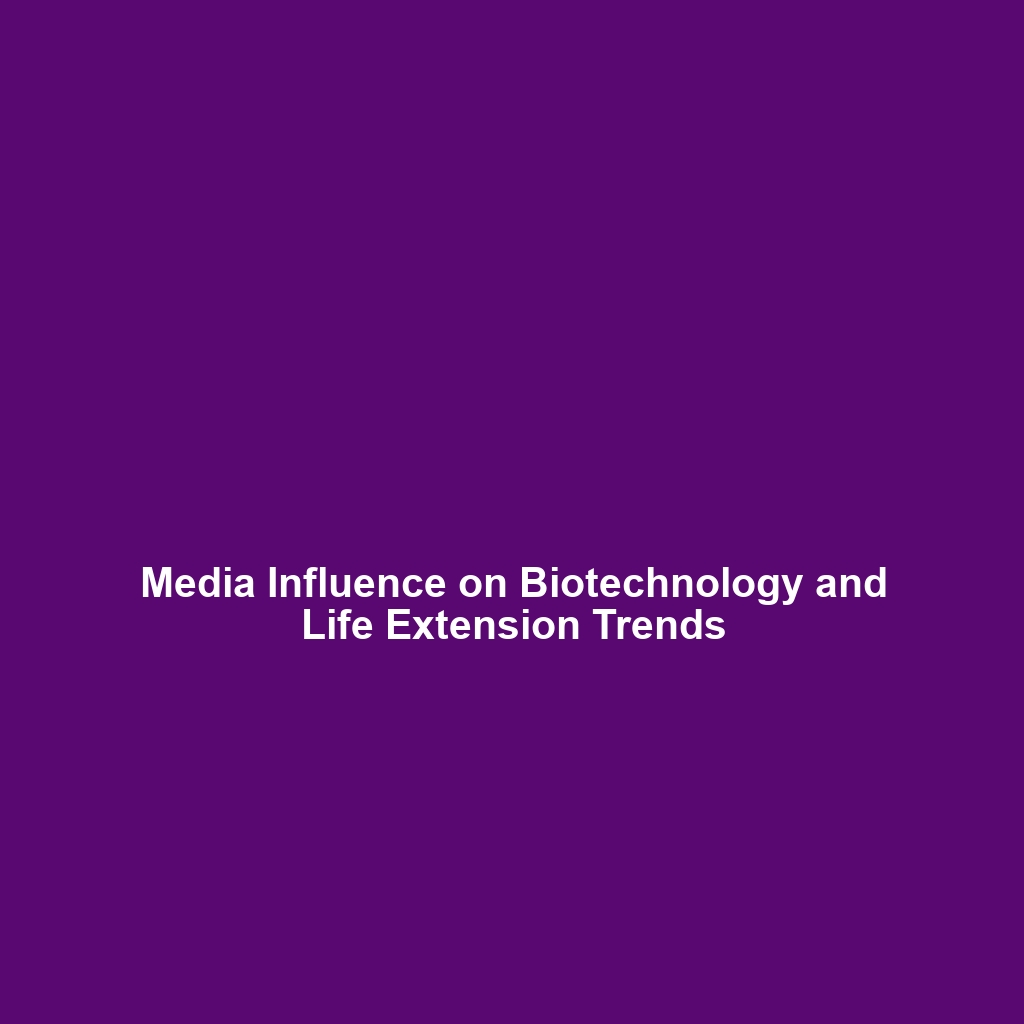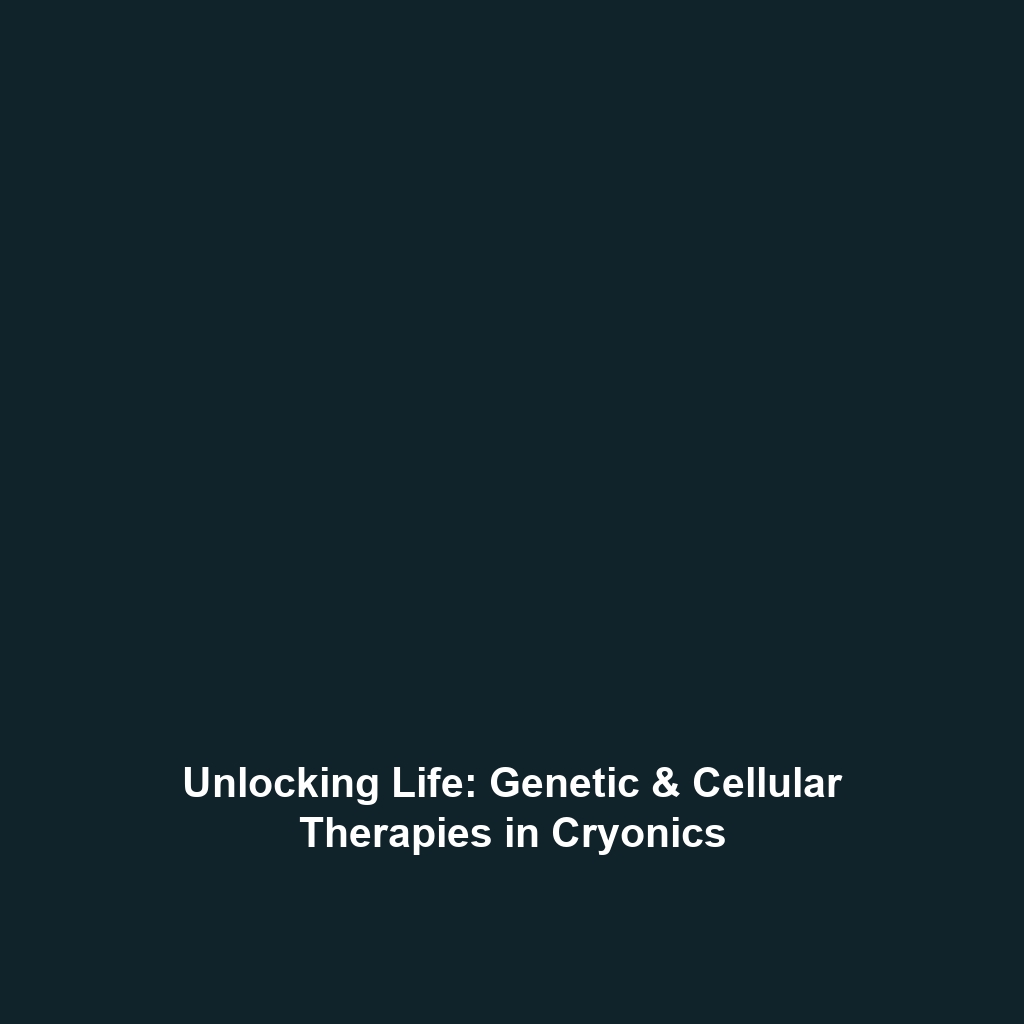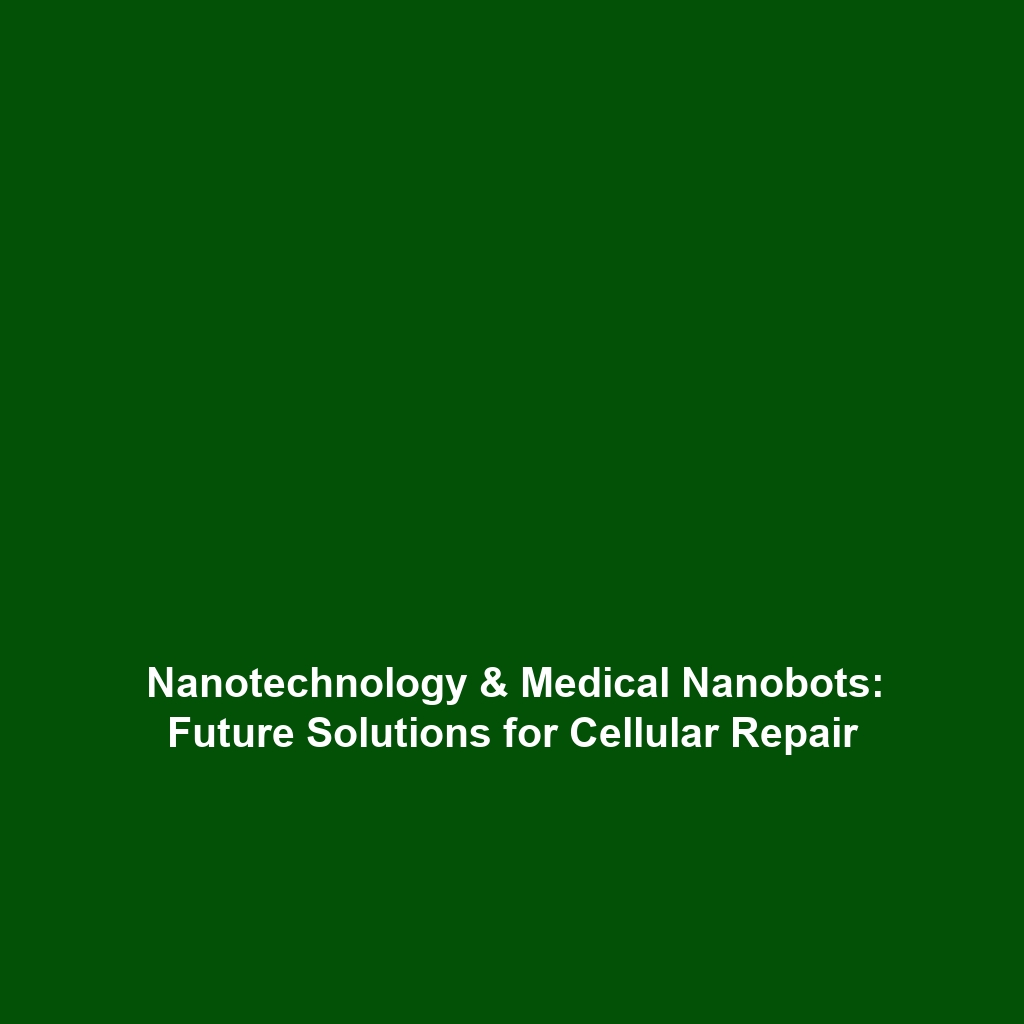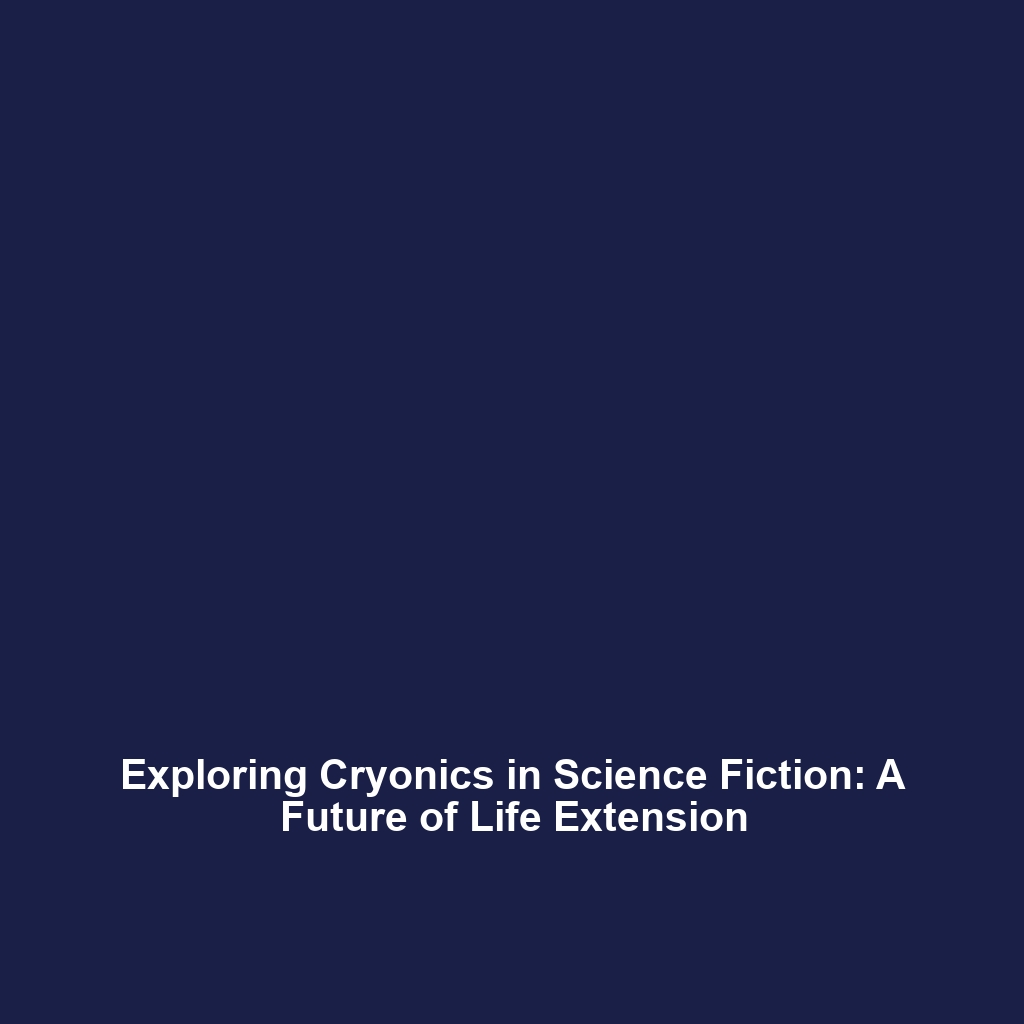Role of Media in Shaping Views: Biotechnology, Genetics, and Anti-Aging Research
Introduction
The media plays a crucial role in shaping public perceptions and discussions regarding breakthroughs in biotechnology, genetics, and anti-aging research. As innovative solutions emerge that promise potential life extension, such as cryonics and regenerative medicine, media coverage significantly influences public interest and debate surrounding these topics. This article explores the intersection of media and scientific advancements, highlighting its importance within the broader context of Cryonics & Life Extension.
Key Concepts
Understanding the role of media in shaping views about life extension involves several key concepts:
Media Influence on Public Perception
Media outlets serve not only as information disseminators but also as interpreters of complex scientific advancements, affecting public opinion on topics like biotechnology, genetics, and anti-aging research.
Biotechnology and Anti-Aging Research
Breakthroughs in biotechnology, including gene editing technologies such as CRISPR, are often sensationalized or misrepresented, influencing public discourse and expectations regarding their implications for life extension.
Applications and Real-World Uses
The role of media in shaping views about biotechnology and anti-aging research has considerable real-world applications, including:
- Promoting Awareness: Media coverage can enhance public awareness of life extension technologies, including cryonics and stem cell research.
- Funding and Investment: Positive media portrayals can encourage investments in biotechnology startups that focus on anti-aging solutions.
- Policy Influence: Media discussions can drive policy change by informing legislators about the public’s interest in life extension technologies.
Current Challenges
Despite its benefits, the media’s role in shaping views on these subjects is not without challenges:
- Misrepresentation: Sensationalized stories can lead to misunderstandings about the feasibility and ethics of life extension technologies.
- Lack of Scientific Literacy: Insufficient understanding of the science can result in public skepticism or misplaced fears regarding biotechnological advancements.
- Ethical Issues: The media may overlook the ethical implications of genetic manipulation and cryonics, leading to uninformed public debate.
Future Research and Innovations
As research continues to evolve, the role of media will be integral in communicating upcoming innovations that impact life extension:
- Next-Gen Technologies: Breakthroughs in synthetic biology and nanotechnology may redefine our understanding of aging and longevity.
- Public Engagement: Increased interaction through social media can foster community dialogue about ethical considerations in biotechnology.
- Educational Initiatives: Future media campaigns might focus on improving public understanding of genetic research and its implications for life extension practices.
Conclusion
The role of media in shaping views surrounding breakthroughs in biotechnology, genetics, and anti-aging research is significant, particularly as it relates to the field of Cryonics and Life Extension. By fostering informed discourse and awareness, media can enhance public engagement and understanding, paving the way for a future where life extension technologies are better understood and ethically managed.
For further reading on advancements in life extension, consider exploring our articles on biotechnology advancements and the ethics of cryonics.








